 June, 2016
June, 2016
Berry sorry
Just in time for strawberry season, sour news: Strawberries now top the list of produce with the most pesticide residue. So says the Environmental Working Group (EWG), which every year puts out its Dirty Dozen list to draw attention to the issue. For the first time in six years, strawberries beat out apples, with an average of 5.75 different pesticides per sample. The rest of the Dirty Dozen includes, in order: apples, nectarines, peaches, celery, grapes, cherries, spinach, tomatoes, sweet bell peppers, cherry tomatoes and cucumbers. If you’re concerned, consider buying organic, and either way, wash your produce!
Arsenic and rice
If you have an infant, you may want to cut way back on the infant rice and rice products you feed her. A large study in the journal JAMA Pediatrics found that 12-month-old infants who ate brown or white rice had total urinary arsenic concentrations that were twice as high as those who ate no rice. Arsenic has been linked to issues with immunity and neurodevelopment. Last month, the FDA proposed a limit on the amount of arsenic allowable in infant rice cereals.
 Pods, people
Pods, people
They’re convenient, sure, but those colorful little detergent pods are just too interesting to young kids, and that’s posing a serious risk. A new study finds that exposure to laundry or dishwasher detergent pods is increasingly sickening kids younger than 6. Between 2013 and 2014, 30 detergent-pod calls a day were made to U.S. poison centers; that’s about one call every 45 minutes. Experts say parents with little kids in the house should buy powdered detergents instead — and then keep those out of little kids’ reach, too.
I feel ya
Motherhood is a messy business, but some ages are tougher than others. So what’s the most stressful stage for moms? A new study draws a conclusion that might surprise you: middle school. Researchers surveyed thousands of moms across the country, with children ranging from infants to adults, and then rated their feelings about their lives. Moms with middle school-age kids reported the highest levels of stress and loneliness, and the lowest levels of life satisfaction. With their raging hormones, peer pressure and experimentation, combined with the onset of eye rolls and other delightful (and normal) forms of rejection, middle schoolers can be tough. Take comfort — it gets better: The happiest moms in the study were the ones with infants and those with adult children!
Stop that right now
Seriously, cosmetic ads aimed at older women are backfiring, big time. A British survey of women ages 40 and older finds that, despite stereotypes in the media, the vast majority aren’t fixated on looking younger. In fact, only 3 percent of women surveyed said they use makeup to look younger; the majority said they do so to look good (52 percent) or feel confident (28 percent). And nearly half of the women said they find ads that feature older women incredibly annoying.
Speaking of annoying . . .
Super-fit gym bunnies top the list of reasons women avoid going to the gym, according to a poll by the British Heart Foundation. Thirty-three percent of women surveyed said they stay away from the gym because they feel intimidated by fitter, competitive people; 27 percent said they don’t know how to use the machines. Still others stay away because of “people who wear Lycra” (16 percent) and “people grunting” (7 percent). Ugh! In an ironic twist, nearly a quarter of women surveyed — 22 percent — said they’re not fit enough to go to the gym.
May, 2016
Chartered territory
Charter schools just survived a tough battle in our state, thanks to a rare move by Gov. Jay Inslee, who refused to veto or sign Senate Bill 6194, allowing it to become law without his signature. The bill funds the schools using state lottery proceeds rather than the state’s general fund. Last fall, the state Supreme Court ruled our state’s charter schools unconstitutional because they’re publicly funded but run by private, unelected boards and therefore are ineligible for tax money. Inslee opposes charters, saying they take resources away from public schools — but despite what he called “deep reservations,” he stopped short of shuttering the schools.
 Empowering our kids
Empowering our kids
Face it: The internet can be a great resource until, well, it’s not. How do we help set practical boundaries for our kids in a digital world? And how do those boundaries intersect with sexuality and relationships? That’s the topic of therapist and sex educator Jo Langford’s latest book, Spare Me the Talk! The Girl’s Guide to Sex, Relationships and Growing Up. It’s also the focus of his upcoming lecture “One Click Away: Encouraging smart choices in a wired world.” Grab a ticket now for this Tuesday, May 24, event at Seattle Children’s Hospital.
D students
A vitamin D deficiency in early pregnancy may as much as double a child’s risk of developing multiple sclerosis (MS) later in life, according to a new Harvard study. Researchers identified nearly 200 people who have been diagnosed with MS whose mothers were part of a study back in 2011; they found a 90 percent higher risk of MS among children whose mothers were vitamin D deficient during pregnancy.
Flu vaccine news
And while you’re at it, talk to your doc about getting a flu shot — you might be preventing more than the flu. New research out of Australia has found a possible link between the flu vaccine and lower rates of stillbirth. The study found that women who received the flu vaccine during pregnancy were 51 percent less likely to experience a stillbirth than pregnant women who went without the shot. The Centers for Disease Control and Prevention recommends that almost everyone — including pregnant women — get a flu vaccine every year.
Gym rats
If you hate hauling it to the gym, you might have your mother to blame. Researchers studying mice have found that those born to mothers that were physically active during pregnancy were 50 percent more physically active themselves, compared with mice whose moms were couch mice. This may indicate that we are programmed to either love or hate working out before we’re even born!
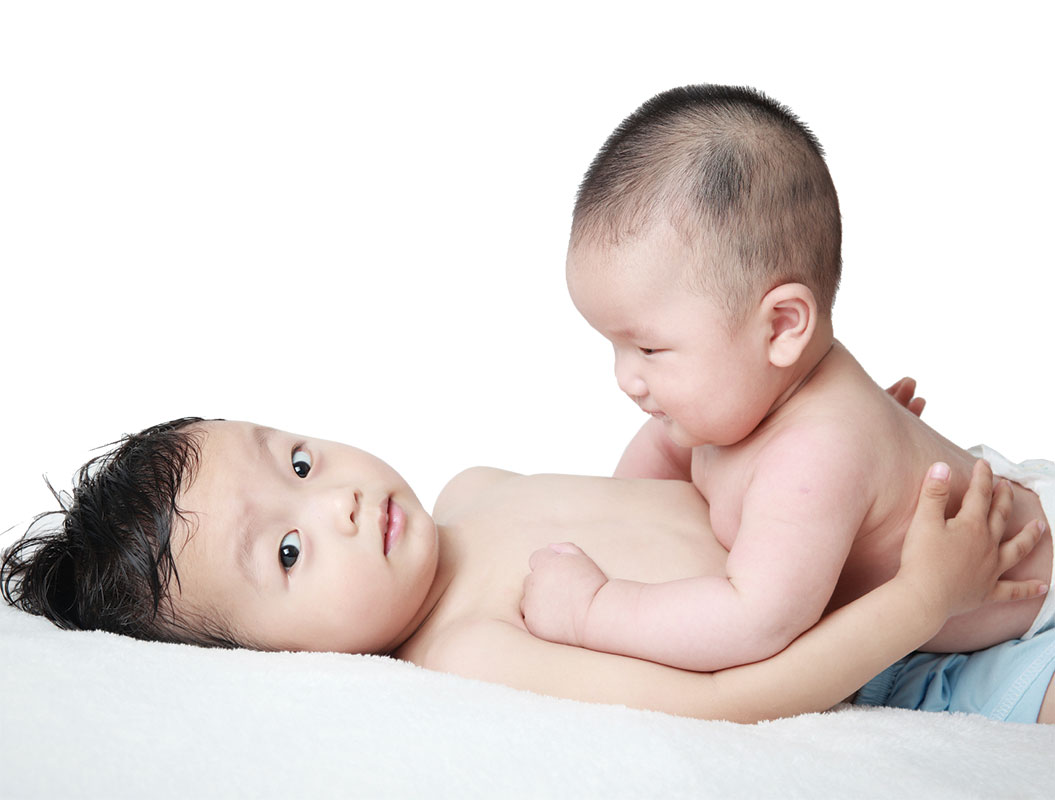 Sibling revelry
Sibling revelry
Toddlers, listen up: That pesky younger brother might just be good for your health!
A new study in the journal Pediatrics finds that becoming a big brother or sister before hitting first grade lowers a child’s chances of becoming obese. Kids who don’t have a younger brother or sister were almost three times more likely to be obese by the time they were in first grade. Researchers say they’re not sure yet exactly why this is true, but they think more active play and less screen time might be a factor once there’s a younger sib to play with.
April, 2016
Over easy
A government advisory panel’s newest set of dietary guidelines is like having Christmas, Halloween and my birthday rolled into one. Fresh off the “naughty list”: eggs. Until now, Americans were told to limit cholesterol to 300 milligrams a day; now, the U.S. Department of Health and Human Services (HHS) and the U.S. Department of Agriculture (USDA) are ditching those limits in light of a lack of evidence that dietary cholesterol is linked to blood cholesterol. Other fine findings: It’s OK to have a moderate amount of alcohol and as many as five cups of coffee a day (it reduces the risk of type 2 diabetes and cardiovascular disease). And, for the first time, the environment is a factor: The panel urged Americans to eat sustainably and avoid beef. Peeps in the beef industry say the panel overstepped itself and are protesting. Government officials will decide whether to adopt the guidelines later this year.
Shell game
A new study suggests that if babies who are at risk of peanut allergy start eating peanut products regularly before the age of 11 months, there is a very good chance that they won’t develop the allergy. The study published in the New England Journal of Medicine found that introducing peanut products into the diets of infants was safe and resulted in a better than 80 percent reduction in the development of the allergy. Important note: Parents of infants with eczema and/or an egg allergy should consult a physician before trying this.
Melatonin alert
Sleep experts in Australia are warning parents about the potential dangers of using melatonin to help their kids sleep. The hormone plays an important role in the body’s ability to develop sleep rhythms and other biological processes. In a paper published in the Journal of Pediatrics and Child Health, researchers note that the U.S. is the only country in the world in which melatonin is completely unregulated. They say that giving melatonin supplements to kids can potentially lead to serious side effects when they are older, including changes in the cardiovascular, immune and metabolic systems. As always, check with your pediatrician before giving your kids melatonin.
Sinking feeling
Another study is dishing about a potential link between allergies and . . . dishwashers. Researchers found that kids in families that wash their dishes in the sink — rather than in a dishwasher — develop fewer allergies. The theory is that kids who grow up in “over-sanitized” homes don’t build up immunity against common bacteria. The study’s authors call their report, which is published in the journal Pediatrics, interesting, but say we shouldn’t toss out our washers just yet; more research is needed. OK then!
Try to stay calm
. . . while reading this: Researchers now say that children who spend more than two hours a day in front of a screen are 30 percent more likely to develop high blood pressure. Thirty percent! And if your kid does less than an hour of physical activity a day, her risk increases by 50 percent. The study looked at a whopping 5,000 kids in eight European countries — a big sampling. The upshot (stop me if you’ve heard this one): Limit screen time and get those kids moving.
Python, Ruby and Java
No, that’s not the name of a new PBS kids’ show (but that would be cool!). It’s a list of common coding languages your child might learn as part of a new program, Code Corps. Seattle is one of seven cities that will benefit from the new program, created by Google and Boys & Girls Clubs of America. Code Corps will recruit and train AmeriCorps volunteers to teach kids ages 9–14 at select Boys & Girls Clubs. The goal is to reach about 5,000 kids nationwide.
Get lectured!
Upcoming must-see ParentMap lectures: Rosalind Wiseman: “Queen Bees and Masterminds,” April 21; John Gottman: “Making Love Last and Marriage Work,” May 18.
March, 2016
Flu fighters

Imagine a world without the flu. Researchers at the University of Washington have brought us closer to that reality by helping develop a revolutionary new drug that could spell the end of the flu as we know it. Unlike the current vaccine, the new treatment keeps up with the rapidly mutating flu virus by fighting different strains simultaneously. So far, the drug has been proven to both prevent and treat the flu in mice; professors Deborah Fuller and David Baker are hopeful that it will work just as well in humans and could one day completely wipe out flu epidemics. Says Seattle to the world (yet again): You’re welcome.
Under the gun

Nearly all children killed by guns in the developed world are killed right here in the U.S. A new study published in the American Journal of Medicine looked at 2010 World Health Organization gun death rates from two dozen high-income countries, including Australia, Canada, France, Germany, Japan and the United Kingdom. Of all gun-related deaths across all countries included in the study, the U.S. accounted for 91 percent of all gun-related deaths among children ages 0–14. Ninety-one percent. Also, women: Ninety percent of all women killed by firearms in all 24 countries were U.S. women.
Find information on family gun safety, visit our family safety portal.
One-two punch
As if it’s not hard enough having attention deficit hyperactivity disorder (ADHD), it now appears that girls with the disorder have double the risk of developing obesity at some point in their lives. A longitudinal study by researchers at the Mayo Clinic indicates that stimulant medications used to treat ADHD do not appear to have any effect on the risk. The researchers are calling for greater awareness among girls, caregivers and health care workers.

Uno-dos ponche
It looks like there are hidden benefits to being bilingual. A new study in the Journal of Experimental Child Psychology shows that bilingual toddlers are better than monolinguals at a certain type of mental control. Also, the more opportunities the tots have to practice switching between languages, the greater the benefit, in terms of cognitive flexibility and greater attention abilities. ¡Muy excelente!
Campy happers
Spring starts this month (on March 20), which means I’m already behind on summer planning. Are you? Help is here: ParentMap’s Camp Fairs come to the North End (March 6) and the South End (March 19) to give you loads of tot ops for summer fun and learning (read more on page 42).
February, 2016
Crumb-y news
Disturbing news for cookie monsters: New research finds that salmonella can survive for at least six months in the cream fillings of cookies and crackers typically found in grocery stores and vending machines. Researchers at the University of Georgia tested four types of fillings: chocolate and vanilla in cookies, and cheese and peanut butter in crackers. Scientists say they’re surprised that salmonella can thrive for so long in a relatively dry environment. Salmonella sickens an estimated 1 million people a year in the U.S. and kills about 380.
Class act
Local child advocates are hailing the recent passage of the federal Every Student Succeeds Act (ESSA), which essentially leaves behind the outdated No Child Left Behind Act of 2001. The new law includes language that emphasizes and supports the social and emotional competencies of students. “We are deeply gratified to see such improvements in federal education policy,” says Joan Cole Duffell, executive director of the Committee for Children. “We know that focusing on children’s social and emotional development actually raises their academic scores. For years, education policy has ignored this research-proven fact.” Among other things, the new law will allow school districts to target federal resources to support evidence-based programs and strategies that further students’ collaboration, communication and critical-thinking skills.

Snuggle bennies
Scientists to brand-new moms: Take a cue from a ’roo! A new study suggests that skin-to-skin contact directly after birth between mother and newborn (known as “kangaroo mother care,” or KMC) may reduce death risks for infants with a low birth weight. Researchers think the contact helps regulate the newborn’s temperature and breathing rate — and also reduces maternal stress and leads to longer duration of breastfeeding. The Harvard-led study found that very low-weight babies (less than 4.4 pounds) who survived and received KMC were 36 percent less likely to die. This is particularly promising in developing countries, where incubators and other critical equipment are scarce, and where the vast majority of neonatal deaths occur.
Swipers in diapers
Toddlers + touch screens = trouble . . . right? Researchers in Ireland did a double click on touch-screen usage by kids between ages 12 and 36 months. They found that 87 percent of parents who own a touch-screen device allow their tot to use it for an average of 15 minutes per day. An impressive 91 percent of the kids studied were able to swipe the screen; 65 percent actively searched for features, and 50 percent were able to unlock the screen. Is all this savvy bad for bitties? Maybe not; researchers say that since touch-screen apps encourage engagement, they’re a bit more like traditional play than passive screen time — so, not as bad as TV. Except for YouTube, which just is.
Candy crush
Candy-themed online games make you eat more candy! Dutch researcher Frans Folkvord found that shortly after playing a game with an embedded food advertisement, children ate 55 percent more of the candy offered to them than children who had played a game with an embedded toy advertisement. Folkvord discovered that children don’t recognize the ads — even when brand names are clearly visible.

Fire starter
Here’s an idea for rekindling your romance, just in time for Valentine’s Day: Download one of the Gottman Institute’s free “love apps” on your smartphone, then follow the prompts to guide you to some enlightening date-night conversation. Whether you want to know your partner better (“Have any of your friends drifted away?”), share hopes and dreams (“What adventures would you like to have before you die?”), explore new terrain in the sack (bold and explicit!) or just have more fun together (“If you could change into any animal for 24 hours . . . ”), there’s an app for that at Gottman Apps!.
January 2016
Bumper crop

Infant deaths caused by crib bumpers are on the rise — and the authors of a new study are calling for an outright ban on the sale of bumpers. The research, published in The Journal of Pediatrics, reviewed data from 2008–2011 from the U.S. Consumer Product Safety Commission (CPSC) and other sources, and found reports of 77 bumper-related deaths — three times more than in two previous seven-year spans. Another 146 infants were involved in bumper incidents in which the babies nearly suffocated, choked or were strangled. “Crib bumpers are killing kids,” says lead researcher Dr. Bradley T. Thach of the Washington University School of Medicine in St. Louis. “Bumpers are more dangerous than we originally thought.” The American Academy of Pediatrics recommends against using crib bumpers — and a 2012 voluntary industry standard aims to make them safer by limiting their thickness — but there are no federal regulations surrounding bumpers. Thach and his team are now urging the CPSC to ban the sale of crib bumpers.
Joint study
You may have heard that the marijuana kids smoke today is much more potent than the pot that was around a generation ago, and it’s true. Now, researchers say that frequent use of that high-potency, “skunk” cannabis causes damage to the brain, particularly the part that aids communication between the right and left hemispheres. Skunk contains higher levels of the main active ingredient in marijuana, delta-9-tetrahydrocannabinol (THC). Scientists at the Institute of Psychiatry, Psychology & Neuroscience at King’s College London in the U.K. also previously released a study linking skunk to greater risk of schizophrenia-like psychosis in frequent users. Smoking pot of any kind, skunk or otherwise, is illegal in Washington for anyone younger than 21.
Painful tooth
Looks like swearing off sugared sodas isn’t enough to keep your smile healthy: Even sugar-free drinks can damage your teeth. Researchers at the University of Melbourne in Australia tested 23 different soft drinks and sports drinks (including flavored mineral waters) and found that most produce measurable damage to tooth enamel. It’s best to avoid drinks that include acidic additives, especially citric acid and phosphoric acid. If you do drink them, rinse afterward with water — but don’t brush for at least an hour or you could remove the softened tooth layer. Better yet: Drink water instead.

Bassett hounds
If your kids have been hounding you for a dog, here’s new reason to give in: A small but slobbery study from Bassett Medical Center in New York found that children who live with dogs tested lower for anxiety. The study looked at 643 kids between 4 and 10 years old. Among the 58 percent of kids with a dog in the home, 12 percent tested positive on a screening test for anxiety, compared with 21 percent of children who did not have a dog.
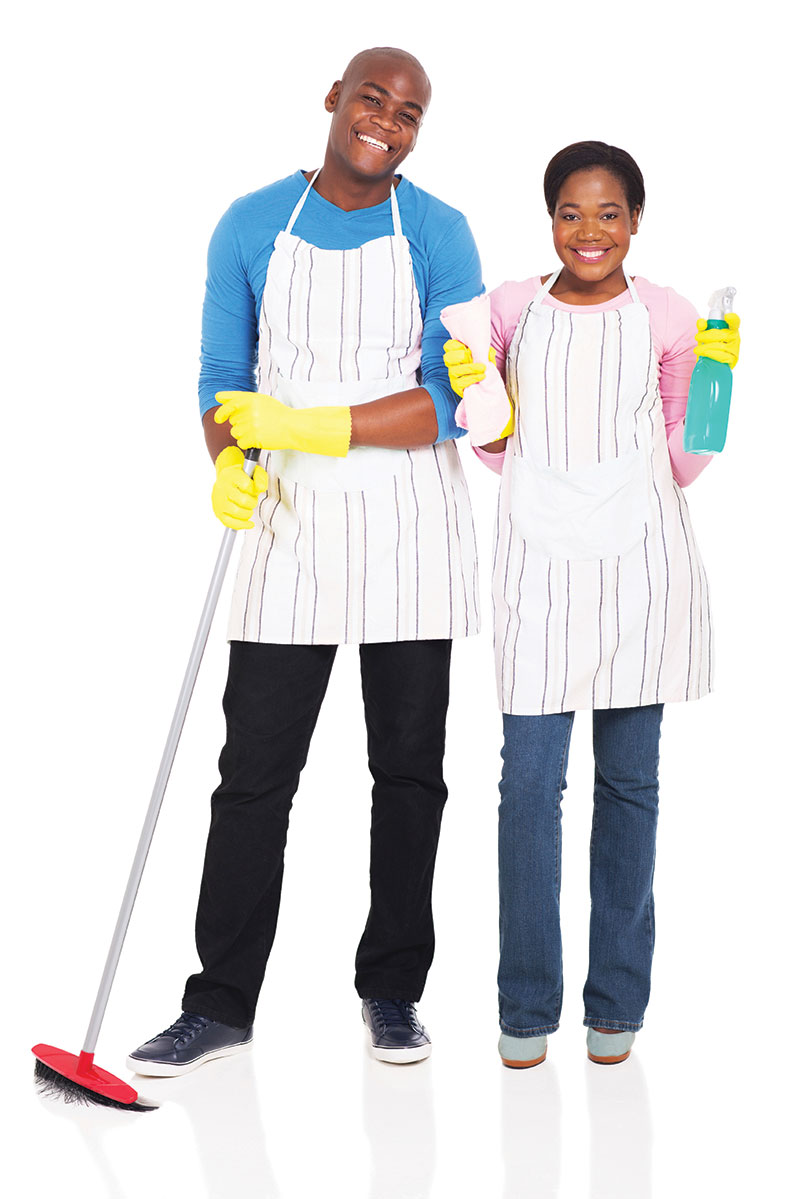
New Year’s resolutions
Do you make them? Do you keep them? Surveys generally find that slightly fewer than half of us do make New Year’s resolutions — usually around losing weight or working out more — but most of us bail pretty quickly. The biggest day for giving up? Jan. 17, now known as “Ditch New Year’s Resolutions Day.” Can you hang on through the end of the month?
Tidy is sexy
Here’s one resolution that could really pay off for men: Do more work around the house! A study in the Journal of Family Psychology finds that men who do their fair share of housework have more frequent and better sex. In fact, both men and women are happier in the sack when they believe household chores are divided fairly. It’s not about how many chores men do, it’s whether their contribution seems fair to their partners. Time to suck it up and fire up the vacuum!
December, 2015
 Antibiotics and pregnancy
Antibiotics and pregnancy
Good news for the thousands of pregnant women in our country who are prescribed antibiotics. A new study of 290,000 pregnancies confirms that common antibiotics, known as macrolides, do not harm an unborn child’s development. Researchers at the University of Montreal in Canada looked at potential effects of the drugs — which include common antibiotics such as erythromycin, fidaxomicin and clarithromycin — on unborn babies. They caution that more obscure antibiotics still need further study.
Gut reaction
The antibiotics news is not all good this month. Researchers at the Johns Hopkins Bloomberg School of Public Health say the drugs might be making kids fat! They may do this by changing gut bacteria, leading to weight gain. The study of nearly 164,000 children found that at age 15, children who had taken antibiotics seven or more times weighed about 3 pounds more than those who did not take antibiotics. “Your [body mass index] may be forever altered by the antibiotics you take as a child,” says study leader Dr. Brian Schwartz. “Our data suggest that every time we give an antibiotic to kids, they gain weight faster over time.” Schwartz says this underscores the need to avoid systemic antibiotics wherever possible.
No bones about it
 In Doritos Locos Taco news this month, it looks like living in a neighborhood with greater access to fast-food outlets may be linked to poorer bone development in early childhood, according to a new study. Researchers at the University of Southampton in the U.K. compared the bone mineral density and bone mineral content of children at birth, and then at age 4 and/or 6, to the number of supermarkets, healthy specialty stores and fast-food outlets in their neighborhood. The analysis showed that a higher number of fast-food outlets in the neighborhood was tied to lower bone mineral density and bone mineral content in newborns; having more healthy specialty stores in the neighborhood was tied to higher bone mineral density at ages 4 and 6.
In Doritos Locos Taco news this month, it looks like living in a neighborhood with greater access to fast-food outlets may be linked to poorer bone development in early childhood, according to a new study. Researchers at the University of Southampton in the U.K. compared the bone mineral density and bone mineral content of children at birth, and then at age 4 and/or 6, to the number of supermarkets, healthy specialty stores and fast-food outlets in their neighborhood. The analysis showed that a higher number of fast-food outlets in the neighborhood was tied to lower bone mineral density and bone mineral content in newborns; having more healthy specialty stores in the neighborhood was tied to higher bone mineral density at ages 4 and 6.
Protecting kids against cancer
The vaccine against human papillomavirus (HPV) is considered critical for protection against certain cancers, but according to the Centers for Disease Control and Prevention, fully four out of 10 girls and six out of 10 boys have yet to get the vaccine. Now, a Harvard University study finds that some of the blame for that might lie with pediatricians. According to the study, 27 percent of doctors do not strongly endorse HPV vaccination — even though HPV is the single most common sexually transmitted infection in the U.S., responsible for 70 percent of the cervical cancer cases worldwide, as well as anal and penile cancers. Talk to your doc!

Sing, child, sing
Singing calms babies down better than talking, according to new research published in the journal Infancy. Researchers at the University of Montreal found that when upset babies ages 3–6 months old listen to music, they remain calm for significantly longer than when they listen to speech — nine minutes, as opposed to four minutes. All the fun of crib-side karaoke along with five screech-free minutes for you? You’re welcome.
Holiday helpers
Wanna get the gimmes out of your holiday? Research shows that giving to others leads to happiness in young children, and it can certainly make the season more meaningful. A few local charities to consider: Holiday Stockings for Homeless Children sews, fills and delivers stockings full of toys to local homeless children. Collect and donate toys, clothes and food (gifts for teens are especially needed) to Hopelink or Wellspring Family Services. Adopt a family by shopping for and delivering gifts together through Bellevue LifeSpring or any YWCA. Or go whole hog and host a holiday donation drive for foster kids through Treehouse; it will mail you a packet to get started.
November, 2015
Ether madness
A chemical used as a fire retardant in consumer goods has been phased out — but possibly not before causing harmful effects in some children. Researchers at Columbia University have just linked prenatal exposure to polybrominated diphenyl ethers (PBDEs) with attention problems in 3- to 7-year olds. In the study of 210 kids, those with the highest exposure to certain PBDEs had approximately twice the number of attention problems of other kids. Phased out since 2004, PBDEs are still among us in textiles, plastics, upholstery and electronic devices that were made before that time. To minimize your family’s exposure, replace any furniture with visible or broken-down foam. Use a wet mop and vacuum fitted with a HEPA filter, and wash hands often with soap and water. Find much more at the Washington Toxics Coalition website.

Reality bites
New proof that love is blind: In a big new study, only one out of six mothers of overweight or obese kids recognized their child as overweight or obese. Researchers at the University of Limerick, Ireland, studied 7,655 mothers and their 9-year-old kids. While denial was rampant when it came to their kids, the moms were better when it came to themselves: 75 percent of overweight mothers and 60 percent of obese mothers were able to recognize themselves as overweight or obese. In our country, about 17 percent of children and 35 percent of adults are obese, and those numbers appear to be rising.
Big-scream TV
This just in: TV is becoming more harmful to kids — but maybe not for the reasons you think. A new report published in the Journal of Neurosurgery: Pediatrics finds that more and more, TVs are toppling onto tots, causing an increasing number of severe head and neck injuries. The reason for the rise? Television sets are getting bigger and more affordable, so they’re in virtually every home. But many aren’t fixed to walls or to stable bases, and little kids who climb onto or bump into them can knock them over or pull them down. Crash test your sets now!

No phubbing!
I’ve long thought that smart-phones are killing off romance, and now there’s proof: New research
from Baylor University finds that mobile phone use (or misuse) leads to relationship problems. The research focused on “phubbing,” or “partner phone snubbing,” the term the researchers coined for that special feeling you get when your partner is distracted by his or her smartphone, glancing at it while you’re talking, perhaps, or checking it during a lull in conversation. They found that 46 percent of people in the study have been phubbed by their partner; nearly 23 percent said phubbing has caused conflict in their relationship. Researchers say it’s easy to think these behaviors are insignificant, but they add up to real damage: The more often a couple’s time together is spent with one of them attending to the phone, the less satisfied the other partner will be in the relationship.
Stellar schools
We’re celebrating some incredible accomplishments by local schools this month. Tacoma Public Schools (TPS) is a finalist for the 2015 Data Flashlight Awards for its use of data to create a dramatic turnaround in graduation rates. Just five years ago, TPS had a graduation rate of only 55 percent. In a few short years, a program including innovative use of data has increased graduation rates by 23 percent! That’s a lot of young lives forever changed.
Three other schools are being honored for helping low-income kids and students of color close the achievement gap. Public television station KCTS’s 2015 Pathways to Excellence Awards go to Chinook Elementary School in the Auburn School District, and Denny International Middle School and Chief Sealth International High School, both in West Seattle. Read more at KCTS9.
October, 2015
 Deep six
Deep six
Hey, Supermom, get some sleep! Researchers at the University of California, San Francisco, have found that people who sleep six hours or less per night are four times more likely to catch a cold once exposed to the virus! The study, published in Sleep, finds that lack of sleep is more important than any other factor in predicting whether you catch a cold — including stress level, education, income and even smoking.
Nit-picking
Lousy news: Head lice are apparently mutating to develop resistance to common treatments. These treatments (including RID) often contain an insecticide called permethrin, which works by killing the lice and their eggs. But now, the little dudes have started morphing their nervous systems, so they’re no longer sensitive to the chemical. There are other treatments available, including natural and prescription options, but still, it’s a head-scratcher.
Zeroing in
From Dec. 2–4, child-development experts, practitioners and educators from all over will gather in Seattle for Zero to Three, a conference aimed at connecting science, policy and practice. Those working with infants and toddlers in early childhood education, early intervention, mental health, Head Start, child welfare, parent education and pediatrics can attend sessions on serving vulnerable infants and toddlers, the newest brain research, signs of emerging autism during infant feeding, trauma-focused psychotherapy and much more. Education credits are available; learn more at Zero to Three's National Training Institute webpage.
Food for thought
In other news from school, it looks like shrinking lunch periods are leading to less healthy meals. A new study in the Journal of the Academy of Nutrition and Dietetics finds that kids who have 20 minutes or less to eat lunch rarely finish their meal and may make unhealthier food choices. For instance, rushed kids are less likely to choose fruit options, and tend to pick at a few things, but finish nothing. There are no federal guidelines on length of lunch breaks — and often kids chew up time waiting in the lunch line.
And speaking of fast food, it looks like eating junk can actually make you dumber. Researchers in Australia have shown for the first time that the part of the brain used for learning and memory — the hippocampus — is smaller in people who eat more unhealthy foods, such as sweet drinks, salty snacks and processed meats. So lay off the Lay’s!

Tricky treats
To protect your children’s health, here are the things you should steal first from their trick-or-treat booty bags: Mr. Goodbar, Snickers, Mounds and Baby Ruth. The reason? They’re ranked the worst by the Academy of Nutrition and Dietetics because of superscary saturated fat and sugar loads. Best sweets to leave for the kiddies? Fat-free delights such as Jolly Rancher hard candies, Pixy Stix, Blow Pops and candy corn, which has only 140 calories and 32 grams of sugar for 19 pieces (!). You can find loads of healthy Halloween ideas at Eat Right.
MS and breastfeeding
Women with multiple sclerosis (MS) are likely to experience a relapse after giving birth. Now, a study in JAMA Neurology suggests that moms who have MS may actually get a brief reprieve from the disease if they breastfeed exclusively during the first two months after birth. Researchers found that only 24 percent of breastfeeding mothers suffered a relapse within the first six months after giving birth, in contrast with 38 percent of mothers who either did not breastfeed or did so only partially.
September, 2015
Antibiotics-arthritis connection?
There may be a new reason to worry about overuse of antibiotics: A recent study, published in Pediatrics, found that children who were prescribed antibiotics had twice the risk of developing juvenile arthritis — and the more antibiotics they were prescribed, the greater was the risk. However, although there is an apparent link, it might not be causal. “A majority of children get antibiotics, but only about one in 1,000 get arthritis,” says lead author Daniel Horton M.D., MSCE, of the Department of Pediatrics at Rutgers Robert Wood Johnson Medical School. “So, even if antibiotics do contribute to the development of arthritis, it’s clearly not the only factor.” Researchers believe that about 25 percent of antibiotics prescribed to children are unnecessary; kids often get better on their own.
Autism discovery
A hormone deficit might be behind the painful social struggles of some kids with autism, according to new research from Stanford University. Scientists there found a correlation between low levels of vasopressin (a hormone involved in social behavior) and the difficulty some autistic children have with understanding that other people’s thoughts can differ from their own. The team is now running clinical trials to see if boosting vasopressin levels can reduce social problems for these kids.
Middle child’s revenge
 In a blow for bossy big sisters everywhere, a massive new study finds no significant link between birth order and brain power. This debunks decades of hotly disputed theorizing about the relevance of birth order to IQ and personality. Researchers at the University of Illinois Urbana-Champaign studied more than 377,000 American high school students and found that firstborn children do indeed have higher IQs than their younger siblings — by about one point. While this difference is statistically significant, the study’s authors say it is “meaningless” (hear that, Karen?). The study also reports that some “infinitesimally small” personality differences correlate with birth order; firstborns were found to have ever so slightly less anxiety and were more extroverted, agreeable and conscientious than sibs born later. How important is the birth-order difference? According to researchers, “It’s not noticeable to anybody.”
In a blow for bossy big sisters everywhere, a massive new study finds no significant link between birth order and brain power. This debunks decades of hotly disputed theorizing about the relevance of birth order to IQ and personality. Researchers at the University of Illinois Urbana-Champaign studied more than 377,000 American high school students and found that firstborn children do indeed have higher IQs than their younger siblings — by about one point. While this difference is statistically significant, the study’s authors say it is “meaningless” (hear that, Karen?). The study also reports that some “infinitesimally small” personality differences correlate with birth order; firstborns were found to have ever so slightly less anxiety and were more extroverted, agreeable and conscientious than sibs born later. How important is the birth-order difference? According to researchers, “It’s not noticeable to anybody.”
Eating for two?
Expectant moms: Before you belly up to that Ben & Jerry’s, I have some seriously deflating news. New research finds that you do not actually need to eat for two. Researchers at Imperial College London found that to meet the demands of her growing baby, a mother’s digestive system in early pregnancy actually enlarges and adapts so it can absorb more energy from the same amount of food. The study’s authors say that the practice of “eating for two” may also explain why some women find it hard to lose weight after giving birth — and may also be linked to the child’s obesity later in life.

Doh!
Also causing obesity in children: Homer Simpson. Turns out, looking at obese-looking cartoon characters prompts kids to eat more low-nutrition, high-calorie food, such as cookies and candy. Researchers at the University of Colorado Boulder say talking to your kids about nutrition can help.
Lunch box hero
As you’re loading up that Jurassic World lunch box for back to school, why not give a thought to going waste-free? The average kid generates about 67 pounds of lunch box waste per year, according to wastefreelunches.org, a mom-run nonprofit. Not only is cutting down on wasteful product packaging good for the environment, the group says it could save you as much as $250 per year! Some easy adjustments: Send sandwiches, fruits and treats in reusable lunch containers, not baggies. Use cloth napkins instead of paper ones, and send stainless-steel forks and spoons (or sporks!) and refillable drink bottles. Loads of other ideas — including menus, posters and nifty containers — are available at wastefreelunches.org.
August, 2015
 H2 oh no!
H2 oh no!
Is your child dehydrated? It’s likely, according to a Harvard University study. Researchers examined the urine of thousands of American kids and found that more than half of them were dehydrated. This condition can have serious repercussions for their physical, mental and emotional health. The researchers say many kids just don’t drink enough water; 25 percent in the study said they never do! Although in most cases, the dehydration wasn’t severe enough to be a serious health threat, it could weaken body functions such as circulation, metabolism and temperature regulation. Other side effects include headaches, irritability and reduced cognitive functioning. The good news? There’s a simple — and free! — solution: Kids ages 5–8 should drink about five 8-ounce glasses of water per day; tweens and teens should down between eight and 10 glasses per day.
Pants on fire
It’s true: Kids with good working memories make better liars. It makes sense, since getting away with it involves remembering those elaborate cover stories (“Bubble Kitty ate the cookie!”). Researchers at the University of North Florida and the University of Sheffield, England, determined this by giving 6- and 7-year-olds a chance to peek at the cards during a memory game and then lie about it. Parents of fibbers, take heart: That lying means your child is building thinking and memory skills.

CALM and collected
If your tot often lies — or pitches epic tantrums, or keeps you up all night — help is here! The long-awaited prequel to clinical psychologist Laura Kastner’s magnificent tool kit for parents of teens, Getting to CALM, has just been released. Getting to CALM: The Early Years: Cool-Headed Strategies for Raising Happy, Caring, and Independent Three- to Seven-Year-Olds offers powerful tools for parents who want exceptional results: a calmer home and healthy, happy kids. You’ll learn tips and tricks that really help with some of the most common and frustrating problems of the early years, all the while gaining a deeper understanding of your child’s weird and wonderful inner world. The book is published by ParentMap — and edited by yours truly; read more here!
Fiber won
Expectant moms who eat a high-fiber diet during pregnancy might reduce the chance that their baby will develop asthma. A new study published in Nature Communications finds that fiber alters a mother’s gut bacteria during pregnancy, producing anti-inflammatory substances that suppress asthma-related genes in their children. If you have a bun in the oven, talk to your doc about beefing up the fiber in your diet.
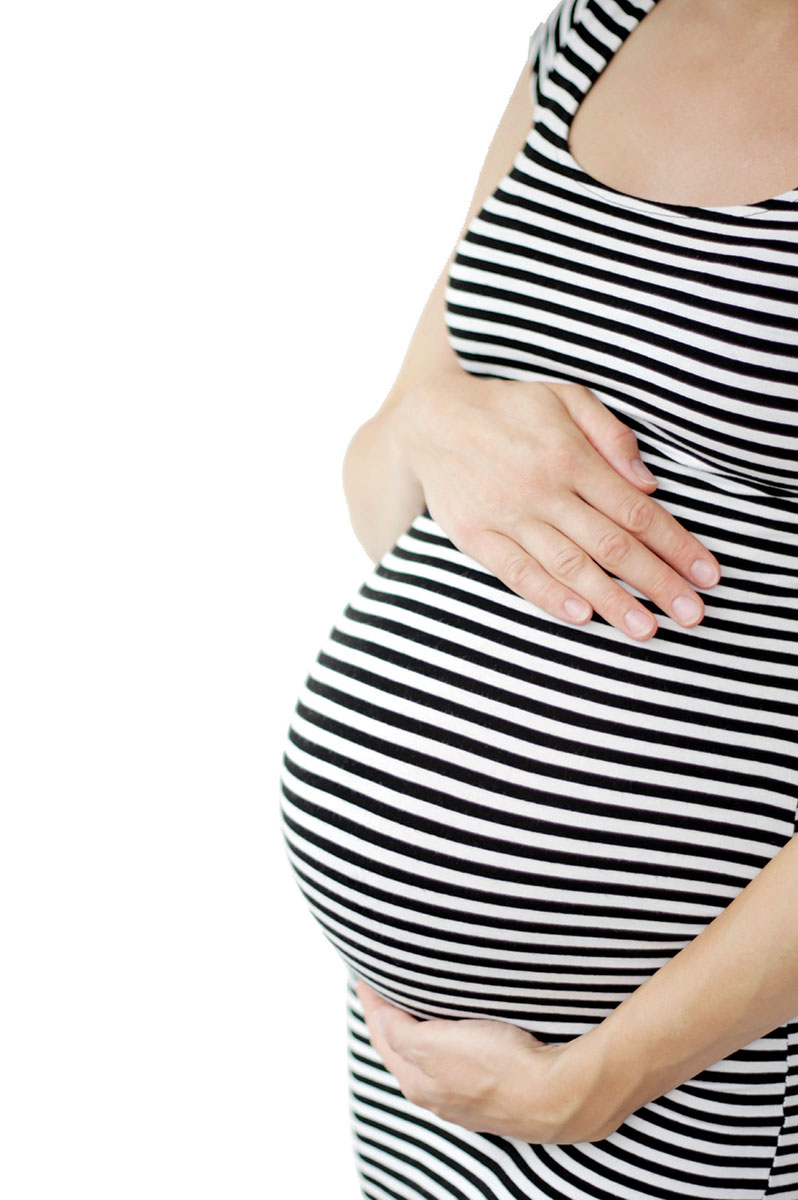 Labor leader
Labor leader
There’s new evidence that fetuses call the shots on the timing of their own birth. A new study in the Journal of Clinical Investigation finds that two proteins in a fetus’s lungs actually initiate the labor process by causing an inflammatory response in the mother’s uterus. The research is promising, because it could lead to new strategies for preventing preterm birth.
Honor roll
There’s an important new addition to Seattle’s long list of bragging rights: Seattle Children’s Hospital has just been ranked sixth in the nation overall by U.S. News & World Report. The report also ranked nine of the hospital’s specialty programs in the top 15 in this year’s Best Children’s Hospitals rankings. Seattle Children’s was also named to the U.S. News & World Report Honor Roll, making it the highest-ranking children’s hospital on the West Coast. We can’t say enough about this precious and critical resource for families; our grateful thanks and congratulations to the amazing health care providers and staff at Seattle Children’s!
July, 2015
Mega mind
Neuroscientists are having their heads rearranged by a stunning discovery that redefines what we know about the body’s immune system. Researchers at the University of Virginia (UVA) School of Medicine (and especially Antoine Louveau, Ph.D. ― hello, Nobel committee?) have found a previously unknown connection between the brain and the immune system. This connection — created by heretofore undiscovered lymphatic vessels — has major implications for how we study and treat everything from autism to Alzheimer’s disease and multiple sclerosis. I ain’t no brain surgeon, but this is exciting! As UVA’s Dr. Kevin Lee says, “They’ll have to change the textbooks!”
Resistance is futile
As long as we’re on the subject of earthshaking scientific breakthroughs, check out this breakthrough from researchers at Tel Aviv University: a promising new tool that could significantly reduce the spread of antibiotic resistance. The tool is actually a two-pronged system: The first nukes antibiotic resistance in selected bacteria, and the second makes other bacteria more sensitive to antibiotics. When the strategy is applied in hospital and other settings, researchers think it could be powerful protection against untreatable — and often lethal — bacterial infections.
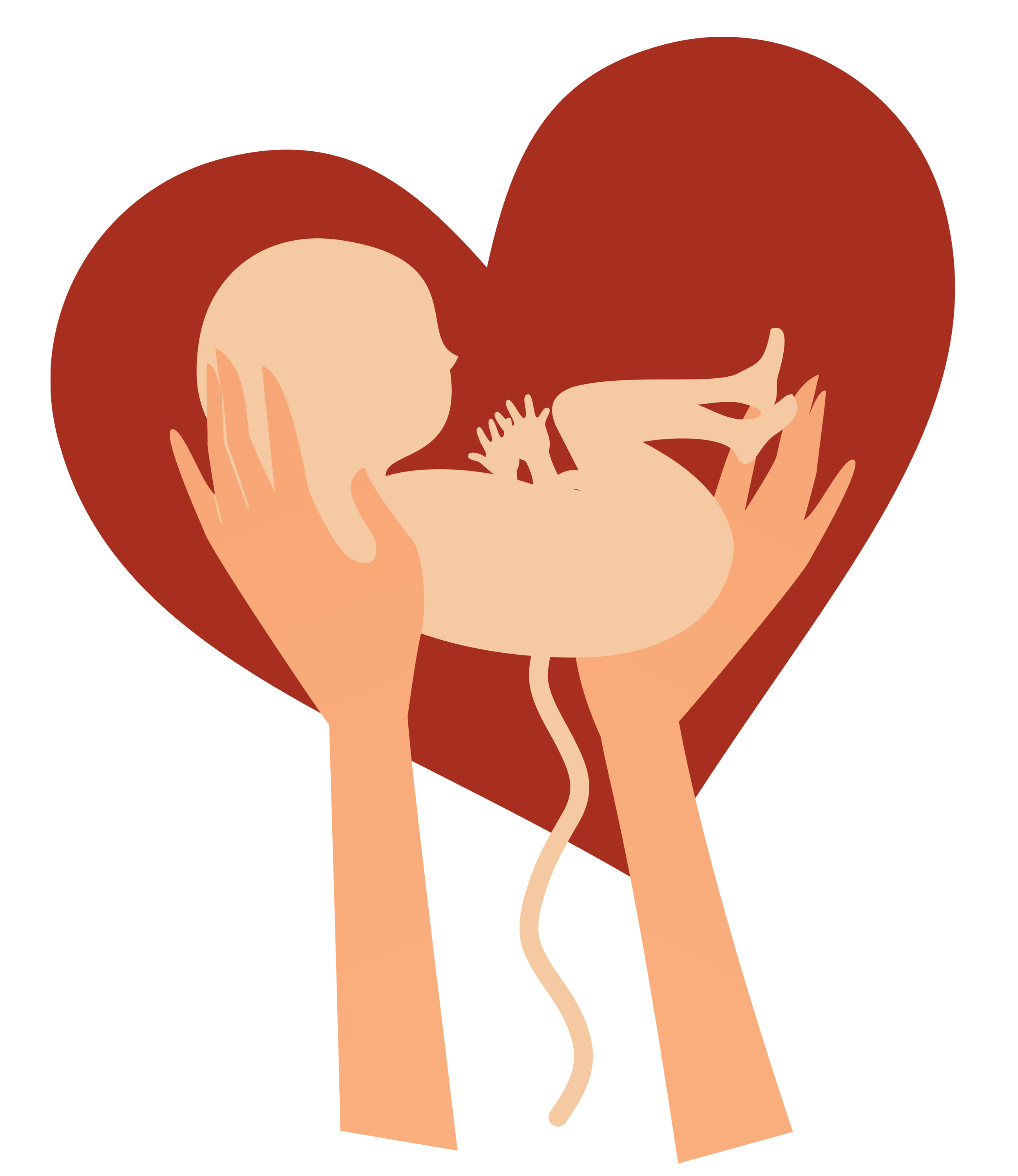
Placenta my heart
Waiting just an extra minute or two after delivery before cutting the umbilical cord could have big benefits for babies down the road, a new study published in JAMA Pediatrics suggests. The delay allows extra time for the baby to receive blood from the placenta, increasing iron storage and helping brain development. In the study, kids whose cords were cut more than three minutes after birth showed slightly higher social and fine-motor skills at 4 years old than those whose cords were cut immediately.
Delivery rumors
In other placenta news — and despite what Kourtney Kardashian says — researchers say there appear to be no health benefits for women who eat their placenta after giving birth. A review at Northwestern University turned up zero reasons to eat the placenta — which acts as a toxin filter in utero — and even questioned its safety, because the effects on moms and nursing babes are unknown. The popularity of the practice has spiked in recent years; before you keep up with the Kardashians, best talk to your doc.
Obamacare tots
Although the enrollment window for most families is closed now (regular enrollment opens again on Nov. 1), new parents should take note: You have 60 days from birth or adoption to sign your new child up for a health plan. Find out more and shop for free or low-cost health insurance at Washington Healthplanfinder. Thanks to the Affordable Care Act, babies born with birth defects can no longer be denied by an insurance company due to preexisting conditions, and health insurance plans must now provide breastfeeding support, counseling and breastfeeding equipment, including the cost of a breast pump ― three cheers (with milk) to that!
Potty mouth
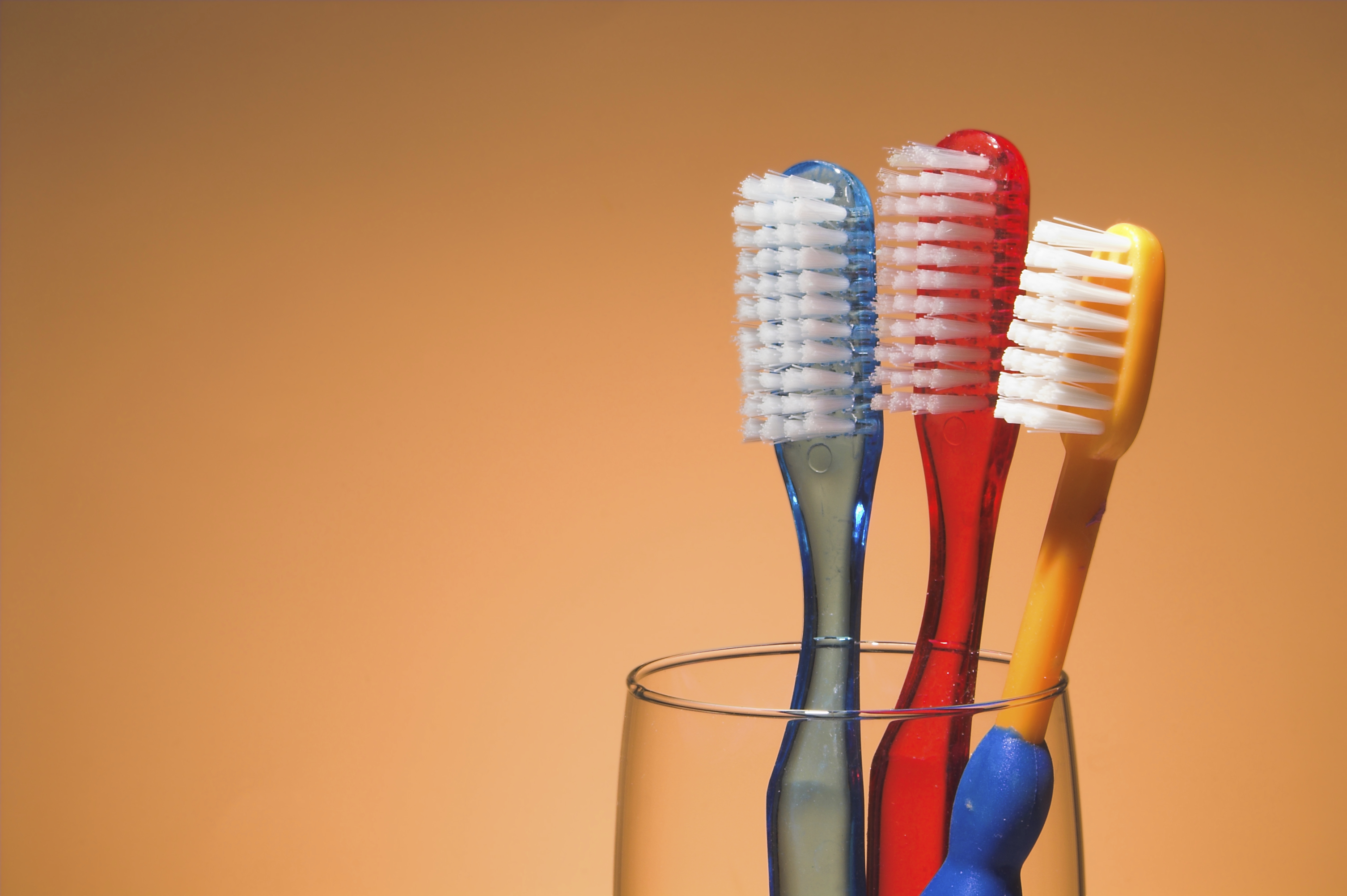 I’m sorry, but I thought you’d want to know: In a new study, 60 percent of toothbrushes kept in a shared bathroom tested positive for fecal matter. What’s worse, most of that fecal matter — 80 percent — came from someone else. Researchers say toothbrushes that are openly stored are exposed to microorganisms from the toilet. They suggest you do not keep your toothbrush in a closed container, however; that breeds bacteria. Instead, rinse and air dry, and replace every three–four months. Oh, poo!
I’m sorry, but I thought you’d want to know: In a new study, 60 percent of toothbrushes kept in a shared bathroom tested positive for fecal matter. What’s worse, most of that fecal matter — 80 percent — came from someone else. Researchers say toothbrushes that are openly stored are exposed to microorganisms from the toilet. They suggest you do not keep your toothbrush in a closed container, however; that breeds bacteria. Instead, rinse and air dry, and replace every three–four months. Oh, poo!
Noms to you
Now that I’ve ruined your appetite, here’s a reminder about our state’s cool summer food program. The Washington State Summer Food Service Program provides free meals and snacks — no questions asked — to all children ages 18 and younger during summer. Find a location near you here!
June, 2015
Autism and prodigies
There’s new evidence of a genetic link between autism and prodigies. Scientists at Ohio State University and Nationwide Children’s Hospital in Columbus studied families that have both prodigies and people with autism and found a commonality on chromosome 1. “Prodigies seem to have some protective genes that are saving them from the deficits associated with autism and only allowing the talent you see in savants to shine through,” says Joanne Ruthsatz, the study’s co-author. Researchers have yet to discover the exact genes involved, but call their research “a good start.”

Squirm to learn
Telling kids with ADHD to sit still and pay attention may be worse than useless. A new study published in the Journal of Abnormal Psychology finds that these kids might actually learn better while fidgeting. It looks like all of that leg swinging, pencil tapping and seat wiggling actually help children with ADHD retain information and work out complex cognitive tasks. The upshot? Finding a way to allow these kids to move around — without causing chaos in the classroom — could be a boon to their learning.
Think on your feet
In other school news, researchers have found that students who use standing desks are more attentive in class. The study, funded by the National Institutes of Health, found a 12 percent increase in on-task engagement when kids used standing desks: raised desks with stools nearby that allow them to stand or sit as they choose. Previous studies have shown that standing desks may also combat obesity; kids using them burn 15 percent more calories than students at traditional desks. Outstanding!
Sports nuts
A small but mighty trend is sweeping the world of sports: peanut-free game watching! Some teams are now hosting peanut-safer games, with park-wide bans on the sale and possession of peanuts, Cracker Jacks and other peanutty snacks. Other teams are designating peanut-controlled fan zones at some games, including the Seattle Mariners. The M’s offer four games with special precleaned and peanut-controlled areas at Safeco Field. You can reserve seats online.

Junk science
Research shows there are two critical windows in which exposure to junk food is most harmful for kids, and one of them is before they are even born. Scientists at the University of Adelaide now say that when expectant moms eat junk food during late pregnancy, they risk preprogramming their babies to be addicted to a high-fat, high-sugar diet by the time they are weaned. (The other window is during adolescence.) The good news is that effects from eating junk food in early pregnancy can be reversed if you clean up your act before your due date. I’m lovin’ it!
Very tricky
I’m also loving this pair of studies that illustrate just how easy it is to trick ourselves into doing the right thing. The first: a study published in the Journal of Consumer Research that finds that special “low calorie” menus at restaurants might be making us fat! When menus include special low-cal sections, we’re actually far less likely to order healthy foods; we tend to rule out such sections right off the bat. We will, however, order the same foods when calories are printed next to them on the regular menu. Go figure.
A second study shows that if you’re planning for a big goal, measuring time in days instead of months, or months instead of years, helps. This makes future events seem closer and thus more urgent, according to new research in Psychological Science. Parents of rising first-graders: Only 144 more months until you have to pay for college!
Fun fact
Father’s Day was born in Spokane! Sonora Smart Dodd created the holiday in honor of her dad, a Civil War vet and single father of six. The first Father’s Day was celebrated in 1910; this year, we raise our glasses (and barbecue tongs) to honor all fathers on June 21!
May, 2015
Milky way
A new warning about the potential dangers of breast milk bought online: A study published in the journal Pediatrics found that about 10 percent of samples purchased via the Internet were actually blended with cow’s milk. This follows an earlier study that found 75 percent of samples bought online contained high levels of bacteria that can cause illnesses such as pneumonia and meningitis. Online breast milk sales have been growing rapidly; some 55,000 women in the U.S. now buy, sell or exchange breast milk via the Internet. The researchers say moms should talk to their pediatricians about other options before buying breast milk online.

Baby Einstein
Don’t look now, but your baby is conducting physics experiments! A study finds that babies learn best when they are surprised — and then test specific hypotheses about those surprises. Researchers at Johns Hopkins University showed 11-month-old babies both predictable and surprising situations; for instance, a ball hitting a wall and stopping versus a ball appearing to pass right through a wall. Not only did the babies learn more about surprising objects, they worked to understand them. When the babies saw the ball appear to pass through the wall, they banged it on a table to test its solidity. In another experiment, when babies saw the ball appear to hover in midair, they dropped the ball to test the ball’s gravity. So that’s what’s going on when food goes flying off the high chair: physics.
Score one for the dreamers
Here’s a surprise: scientific evidence that daydreaming actually enhances brain performance. Researchers at Bar-Ilan University in Israel believe that daydreaming activates a network involving many parts of the brain, as opposed to the localized neural activity that occurs while doing specific tasks. The result: creativity and enhanced mood — and an improved ability to stay mentally on task and efficient. So, daydreaming at work equals productivity! No word yet on whether online shoe shopping has a similar effect.

Modest mouse
If you want to boost your kids’ self-esteem, be careful — you could overshoot the mark. A new study published in the Proceedings of the National Academy of Sciences found that children whose parents describe them as “more special than other children” and deserving of “something extra in life” were more likely to be narcissistic. “People with high self-esteem think they’re as good as others, whereas narcissists think they’re better than others,” says one of the study’s co-authors. The researchers claim that theirs is the first prospective study to investigate how narcissism develops over time. So I guess it’s more special than other studies on narcissism.
Got Gottman?
ParentMap’s annual John Gottman lecture always sells out — and always results in some mind- and marriage-altering revelations. Bring your partner to Gottman’s talk “Making Love Last and Marriage Work,” on Monday, May 18 at Town Hall Seattle. You can also attend a special premiere screening of the documentary Having It All, which explores the persistent challenge of work/life balance for moms.
April, 2015
 Over easy
Over easy
A government advisory panel’s newest set of dietary guidelines is like having Christmas, Halloween and my birthday rolled into one. Fresh off the “naughty list”: eggs. Until now, Americans were told to limit cholesterol to 300 milligrams a day; now, the U.S. Department of Health and Human Services (HHS) and the U.S. Department of Agriculture (USDA) are ditching those limits in light of a lack of evidence that dietary cholesterol is linked to blood cholesterol. Other fine findings: It’s OK to have a moderate amount of alcohol and as many as five cups of coffee a day (it reduces the risk of type 2 diabetes and cardiovascular disease). And, for the first time, the environment is a factor: The panel urged Americans to eat sustainably and avoid beef. Peeps in the beef industry say the panel overstepped itself and are protesting. Government officials will decide whether to adopt the guidelines later this year.
Shell game
A new study suggests that if babies who are at risk of peanut allergy start eating peanut products regularly before the age of 11 months, there is a very good chance that they won’t develop the allergy. The study published in the New England Journal of Medicine found that introducing peanut products into the diets of infants was safe and resulted in a better than 80 percent reduction in the development of the allergy. Important note: Parents of infants with eczema and/or an egg allergy should consult a physician before trying this.
Melatonin alert
Sleep experts in Australia are warning parents about the potential dangers of using melatonin to help their kids sleep. The hormone plays an important role in the body’s ability to develop sleep rhythms and other biological processes. In a paper published in the Journal of Pediatrics and Child Health, researchers note that the U.S. is the only country in the world in which melatonin is completely unregulated. They say that giving melatonin supplements to kids can potentially lead to serious side effects when they are older, including changes in the cardiovascular, immune and metabolic systems. As always, check with your pediatrician before giving your kids melatonin.
Sinking feeling
Another study is dishing about a potential link between allergies and . . . dishwashers. Researchers found that kids in families that wash their dishes in the sink — rather than in a dishwasher — develop fewer allergies. The theory is that kids who grow up in “over-sanitized” homes don’t build up immunity against common bacteria. The study’s authors call their report, which is published in the journal Pediatrics, interesting, but say we shouldn’t toss out our washers just yet; more research is needed. OK then!
Try to stay calm
. . . while reading this: Researchers now say that children who spend more than two hours a day in front of a screen are 30 percent more likely to develop high blood pressure. Thirty percent! And if your kid does less than an hour of physical activity a day, her risk increases by 50 percent. The study looked at a whopping 5,000 kids in eight European countries — a big sampling. The upshot (stop me if you’ve heard this one): Limit screen time and get those kids moving.
Python, Ruby and Java
No, that’s not the name of a new PBS kids’ show (but that would be cool!). It’s a list of common coding languages your child might learn as part of a new program, Code Corps. Seattle is one of seven cities that will benefit from the new program, created by Google and Boys & Girls Clubs of America. Code Corps will recruit and train AmeriCorps volunteers to teach kids ages 9–14 at select Boys & Girls Clubs. The goal is to reach about 5,000 kids nationwide.
Get lectured!
Upcoming must-see ParentMap lectures: Rosalind Wiseman: “Queen Bees and Masterminds,” April 21; John Gottman: “Making Love Last and Marriage Work,” May 18.
March, 2015
Don’t miss this lecture!
She’s a guru to parents of tweens and teens, but now Dr. Laura Kastner has tuned her parenting expertise to the needs and challenges of kids ages 3–8. The principles of Kastner’s best-selling book, Getting to Calm, apply perfectly to parenting younger children. Come learn how to set limits and exercise discipline through love at the March 31 lecture with Dr. Kastner, “From Love to Limits: The  Early Years,” 7–9 p.m. at Stroum Jewish Community Center, Mercer Island. Learn more and get tickets here.
Early Years,” 7–9 p.m. at Stroum Jewish Community Center, Mercer Island. Learn more and get tickets here.
Protein shake
A bombshell discovery is utterly upending decades-old research on gestational diabetes. Scientists at Duke and Northwestern universities have made a discovery that sheds light on how the body metabolizes sugar. They’ve discovered a protein made by a gene, called HKDC1, which may be a genetic predictor for whether a pregnant woman develops hyperglycemia (excess blood sugar). About 4 percent of pregnant women in the U.S. develop diabetes during pregnancy; 10 percent have gestational hyperglycemia. It’s a major concern, because it can cause a child to suffer from obesity and diabetes later in life. The hope is to now develop a screening to measure the risk of developing gestational hyperglycemia. Joint pain
 A mixed baggie of news about marijuana
A mixed baggie of news about marijuana
Looks like legalizing the stuff hasn’t resulted in increased use among tweens and teens — yet. The National Institute on Drug Abuse surveyed about 50,000 eighth-, 10th- and 12th-grade students in the U.S. and found no increase in the use of marijuana, despite legalization. But a majority of high school seniors don’t see pot as very harmful (only 36.1 percent, down from 52.4 percent in 2009). Experts worry that the decreasing number of students who perceive the substance’s harmful effects could lead to a future increase in use. Among other things, marijuana affects brain development; heavy use can lead to compromised learning and memory.
Picky, picky
Sweet news for the parents of pastafarians! There is now actual research being done on the causes for and treatments of picky eating. Because of this research, we now know that among 2- to 4-year-olds, there are four types of picky eaters:
- Sensory-dependent eaters, who won’t eat anything that’s mushy, slippery or lumpy.

- Behavioral responders, who cringe or gag when food isn’t prepared in the “right” way.
- Preferential eaters, who won’t try new foods and avoid foods that are mixed.
- General perfectionists (by far the largest group), who have very specific ne
eds, little variety in their diet and may insist that foods not touch each other.
Next, researchers at the University of Illinois hope to develop specific strategies for parents to try for the different types of behaviors. Probably not soon enough for you; better get to fixing those shells ’n’ cheddar.
Music to my ears
There is now strong evidence that giving your kids music training can lead to cognitive advantages in their old age. A new study of adults ages 55–75 found that those who started formal lessons on a musical instrument before the age of 14 — and kept it up for at least a decade — were less likely to experience a loss of speech comprehension. Scientists think musical training enhances key areas in the brain that support speech recognition.
 Recess finesse
Recess finesse
Here’s a startlingly simple way to get kids to eat a healthier lunch: serve lunch after recess. A new study published in Preventive Medicine finds that when recess comes first, kids are 54 percent more likely to eat the fruits and veggies on their school lunch tray. Why? Because when recess is after lunch, kids hurry to finish so they can go out to play, dumping the healthier stuff into the trash.
February, 2015
Big babies
Looks like bigger babies have a leg up when it comes to school success. Researchers at Northwestern University have found that babies who weigh more at birth tend to score higher on tests in elementary and middle school. This is also true among twins: If one is heavier at birth, he is likely to go on to have higher average test scores than his smaller sib. The advantage holds up regardless of race, socioeconomic status and other factors, though researchers say this doesn’t mean that children with low birth weights can never catch up.
Winning at losing
Teenagers who are the most successful at losing weight have something in common: They tend to do it for their own sake. A new study about obese teenagers finds that the ones who are able to significantly slim down — by an average of 30 pounds — do it for their own health, not because of peer or parental pressure. Researchers at Brigham Young University report that more than 60 percent of formerly obese teens say it was their own decision to lose weight; about 43 percent say peer acceptance was a factor.
No-brainer
 You know those concussion forms you fill out so your kids can play sports? Turns out they’re making a big difference — or rather, the legislation behind them is. A University of Michigan study finds that in states with concussion laws (including Washington’s 2009 Zackery Lystedt Law, which requires that youth athletes suspected of sustaining a concussion be medically cleared before they are allowed back in the game, practice or training), there was a 92 percent jump in children seeking medical help for concussions, which means fewer potentially dangerous head injuries are going untreated.
You know those concussion forms you fill out so your kids can play sports? Turns out they’re making a big difference — or rather, the legislation behind them is. A University of Michigan study finds that in states with concussion laws (including Washington’s 2009 Zackery Lystedt Law, which requires that youth athletes suspected of sustaining a concussion be medically cleared before they are allowed back in the game, practice or training), there was a 92 percent jump in children seeking medical help for concussions, which means fewer potentially dangerous head injuries are going untreated.
Top 10 sickest states
Score one for Washington: In a study of data collected by a weirdly addictive new app, our state came out as the sixth-healthiest in the nation in 2014. Oregon, not so much; the Duck State (or whatever) was rated the sixth-sickest in the nation. These results are very reliable, since they’re based on social media (!) and also an app called Sickweather, which scans social media for reports of illness. Sickest state? Kansas. Healthiest? Idaho. Or maybe what we’re actually measuring here is which state’s residents complain the most on social media...
I don’t remember eating that
A new study finds that eating trans fat might damage your memory. Researchers studying a sample group of men found that the ones who ate the most trans fat remembered about 11 fewer words out of 104 than those who ate the least. “Trans fats increase the shelf life of the food, but reduce the shelf life of the person,” says the study’s author and sound-bite machine Beatrice Golomb, M.D., of the University of California, San Diego School of Medicine. Biggest trans-fat offenders include french fries, microwave popcorn and ice cream. Try to remember not to eat them!
 On the hook for V-Day
On the hook for V-Day
A totally unscientific poll of readers of Men’s Health and Women’s Health magazines has spotted some key differences in the way men and women think about Valentine’s Day. When asked, “Do you expect to have sex because it’s Valentine’s Day?” most men (50.1 percent) said “Yes!” while women (56.9 percent) said “No.” To the question “Who is supposed to plan Valentine’s Day?” most women (68.1 percent) said it should be planned together, while most men (56.9 percent) thought they were on the hook. But, good news: The vast majority of both men (85.6 percent) and women (85.0 percent) say it’s not important that they receive a gift on Valentine’s Day (well, unless you think sex is a gift). Meanwhile, good news for babysitters: You can charge whatever you want this Valentine’s Day! The ultimate date-night movie (?) hits theaters on Feb. 13. Color me Fifty Shades of No Way!
January, 2015
Baby got back
 Parents of infants, here’s an important reminder: Forego those darling crib bumpers and grandma-knit baby blankets at bedtime. A new report from the National Institutes of Health (NIH) finds that most U.S. infants — nearly 55 percent! — are still being placed to sleep with bedding that increases their risk of sudden infant death syndrome (SIDS). According to the NIH, babies should be placed on their backs on a firm, safety-approved mattress covered by a fitted sheet (and no cushy stuff underneath the baby, either); toys, bumpers, quilts or other bedding should be kept out of the crib.
Parents of infants, here’s an important reminder: Forego those darling crib bumpers and grandma-knit baby blankets at bedtime. A new report from the National Institutes of Health (NIH) finds that most U.S. infants — nearly 55 percent! — are still being placed to sleep with bedding that increases their risk of sudden infant death syndrome (SIDS). According to the NIH, babies should be placed on their backs on a firm, safety-approved mattress covered by a fitted sheet (and no cushy stuff underneath the baby, either); toys, bumpers, quilts or other bedding should be kept out of the crib.
Girl alert
Got a girl who won’t pay attention? Don’t write it off as normal (albeit exasperating) tween behavior! New research finds that symptoms of attention deficit hyperactivity disorder (ADHD) may be missed in tween girls because they are more likely than boys to display inattentiveness, rather than the hyperactivity and impulsivity most people associate with ADHD. In the study, nearly 50 percent of moms of tween girls diagnosed with ADHD say they first attributed the behavior to
normal adolescent struggles. The study was commissioned by Shire Pharmaceuticals, makers of Adderall. But still.…
Mixed media
Good news and bad news from a new study on teens and screens: Turns out all of that texting, Snap-chatting, Skyping and TwitBooking is apparently rewiring teen brains for better multitasking. The study — conducted by two high school seniors and presented to the American Academy of Pediatrics — found that some teens who “chronically use multiple media” are becoming adept at switching from devices to real life without losing their performance edge. On the flip side, these kids do worse when asked to focus on a single task. All of which leaves parents of teens right back where we started.
Lunchbox hero?
For all those well-meaning parents who pack their kids’ lunches to avoid “unhealthy” options at school: Here’s 20 minutes of your morning back. It looks like the vast majority of homemade lunches are far unhealthier than what’s on offer at school. New research published online by JAMA Pediatrics finds that lunches brought from home by elementary and middle school students are generally loaded with sodium (nearly double that of recommended guidelines), and contain fewer servings of fruit, veggies and whole grains. About 90 percent of them also contain desserts, snack chips and sweetened beverages. Schools must follow strict nutrition guidelines, so consider leaning on them for lunch instead. You’re welcome.
 Chain reaction
Chain reaction
New rules from the U.S. Food and Drug Administration (FDA) are about to destroy your junk-food deniability: Chain restaurants and vending machines will soon be required to prominently display nutrition information. Since most Americans eat and drink about one-third of their calories away from home, these rules have huge implications. By about this time next year, you won’t be able to order that Nacho Cheese Doritos Locos Taco in blissful ignorance: The calories, fat, saturated and trans fats, cholesterol, sodium and more will be right there on the menu for you to see. ¡Ay, caramba!
 Milkin’ it
Milkin’ it
Here’s a chill new product for nursing moms: specially designed freezer trays for storing breast milk. Made from food-safe, BPA-free PET plastic, the trays create perfect 1-ounce sticks that are shaped to be easily popped through baby-bottle openings. A handy cover protects frozen milk from Häagen-Dazs and dino chicken nugget cross-contamination. These mom-invented trays also keep disposable plastic bags out of the landfill. Find ’em at Fairhaven Health. We give it two pumps up!
















